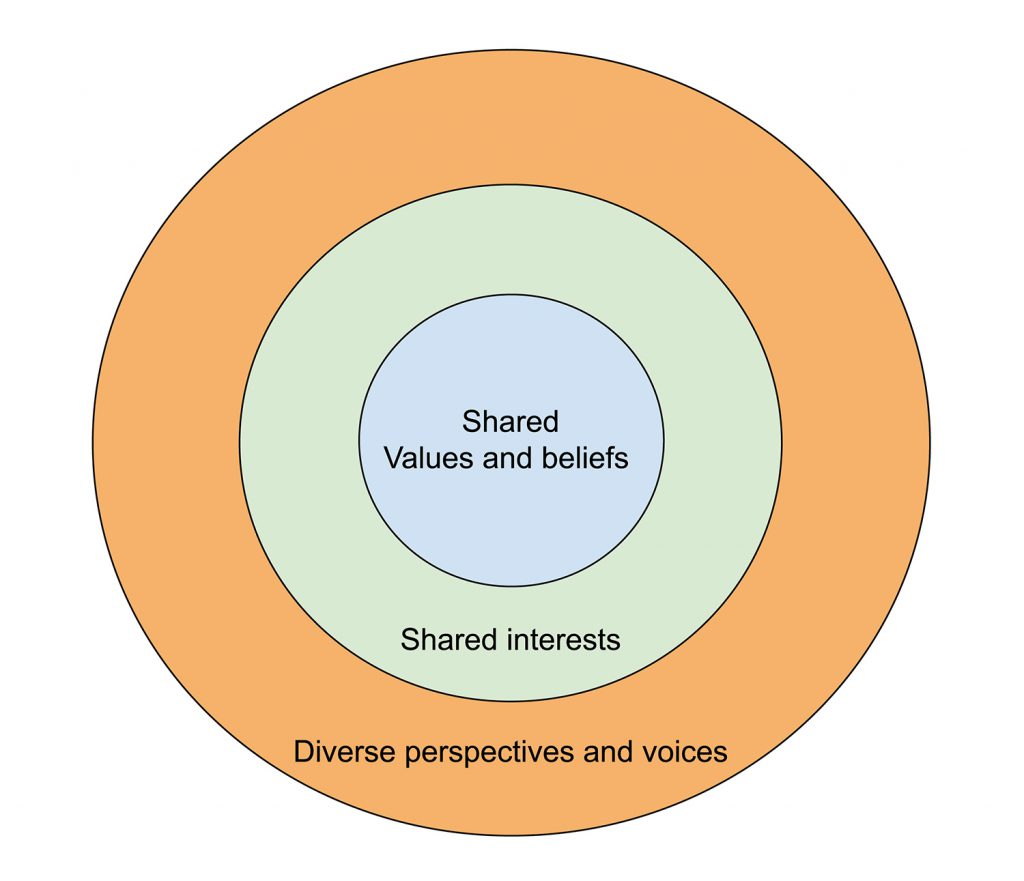View or share this material in a Google Doc: What’s a PLN and Why Is It Important?
Objective
To explore professional learning networks for educators and their role in sustaining ongoing professional learning for teachers, school leaders, and district leaders.
The estimated time for this activity is 20–25 minutes.
Watch this Video
According to NYSED’s Culturally Responsive-Sustaining Education Framework, “ongoing professional learning is rooted in the idea that teaching and learning is an adaptive process needing constant reexamination (Moll et al., 1992; Gay, 2010).” A professional learning network, or PLN, gives educators an opportunity to sustain this practice through connections, discussions, and innovative ideas shared with peers you may never meet in person.
Watch this video to learn more about professional learning networks and how you can grow your own:
Stop & Think
(Key: T — Teachers, SL — School Leaders, DL — District Leaders)
- Who is currently in your professional learning network? (T, SL, DL)
- What personal goals do you have for growing your professional learning network and why? (T, SL, DL)
- How will a professional learning network support continued professional learning and growth for educators? (T, SL, DL)
- How will a diverse professional learning network support your culturally responsive-sustaining learning environment? (T, SL, DL)
- Do you provide opportunities for your teachers and staff to purposefully grow their professional learning network (during staff meetings, PD days, etc.)? (SL, DL)
Brainstorm & Design
Using the image below, take time to reflect on who is currently in and who you want in your professional learning network as you read the bullets in this section. Like any network, your PLN will take time to grow. Regularly come back to this image to include any additions to your network, and set goals for yourself to seek out new opportunities to continue your professional learning and growth.

Your professional learning network should reflect your values, passions, and area(s) of expertise. Identify organizations and individuals whose mission statements and resources align with your personal beliefs about teaching and learning. For many organizations, you can subscribe to their email list, bookmark their blog, follow them on social media, or sign up for in-person or virtual events.
Consider your passions and area(s) of interest.
Twitter is a powerful platform for connecting with educators who share your passions and interests. Twitter chats use particular hashtags to connect educators across the globe at a regular time and usually provide opportunities to both ask and answer questions. See below for a list of a few popular hashtags in education:
- #engchat
- #kinderchat, #1stchat, #2ndchat, #3rdchat, #4thchat, #5thchat, #mschat
- #edchat
- #edtech
- #bookcamppd
Certain private communities require a profile and provide a space for educators to go deeper in discussing topics and sharing resources. The ones linked below have been identified by EdWeek.org.
Follow and subscribe to another educator or professional’s YouTube channel
By subscribing, you will be notified when they post new content. You may find channels dedicated to your professional growth, while other channels may support your curriculum and instruction. Common Sense Education defines “the best YouTube videos for the classroom [as] the ones that teach or — better yet — show something you can’t otherwise do in your classroom.” Their list, along with Ted-Ed — committed to “creating lessons worth sharing [as] an extension of TED’s mission of spreading great ideas” — is linked below:
Blogs
Find and share resources, explore insights into education, and connect with professionals who share your passions and areas of interest. Bookmark a blog you like when you are looking for some extra motivation or set up email notifications to stay on top of the author’s (or organization’s) latest content. The Open Education Database (OEDB) has identified the Top 100 Education Blogs.
Your learning environment consists of diverse backgrounds, cultures, languages, and experiences. Your professional learning network should be just as diverse. As educators, we are preparing our learners for the real world. Therefore, a network of professionals outside of education should include perspectives, ideas, and concepts different from our own that will help us make authentic connections for our learners. In addition to authentic application of learning, a diverse PLN will help us grow as culturally responsive-sustaining educators. We will have opportunities to better understand and appreciate the diversity of our learners, our community, and our world.
Additional Resources
While technology has helped extend professional learning networks globally, they remain rooted in relationships. A PLN leverages social media and technology to allow you to collect, communicate, collaborate, and create with connected colleagues anywhere, at any time. You can start growing your own professional learning network in person, over online forums, or using social media platforms. Explore this article, “The Best Educator PD Comes from Your Professional Learning Network,” from the International Society for Technology in Education (ISTE) to start growing your own professional learning network using Twitter, Voxer, and EdCamps.
Also from ISTE comes 44 Education Twitter Chats Worth Your Time. This resource provides the Twitter hashtag and chat days and times to get you started or help you continue growing your professional learning network.
